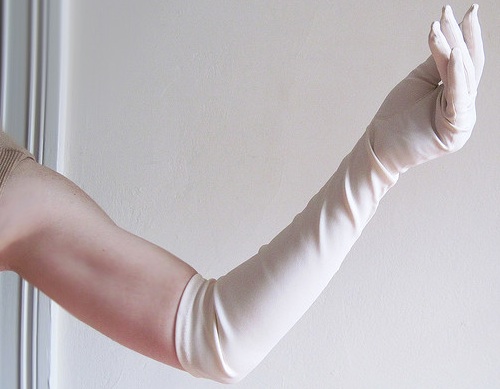
If you want to connect with just-right clients in an authentic way, you need to be willing to be vulnerable.
When you are vulnerable, you not only affect others, but also agree to be affected by them.
You lower your defenses. You let go of any pretense to being perfect or superhuman.
When you are vulnerable with current or prospective just-right clients, they see you as a real person. You level the playing field. Your marketing and sales efforts are authentic and not manipulative.
But vulnerability has its downside. You can over-disclose, making the other person uncomfortable. You can be too raw, making the other person feel responsible for your well-being. Vulnerability can be manipulative in its own way.
It takes self-awareness and self-control to keep vulnerability from degenerating into an emotional striptease.
A striptease is the opposite of authentic vulnerability
A striptease is sharing emotional content in a way that consciously or unconsciously manipulates the other person. An emotional striptease reduces your legitimate authority and puts your current and prospective clients in the position of taking care of you when it is your job to take care of them.
Your clients want to know you are human. They need to know you’ve walked in their shoes. But they don’t want or need to process your stuff with you.
So how do you know the difference between appropriate vulnerability and a striptease?
How to discern authentic vulnerability from a striptease
Here are six questions that will help you discern whether or not vulnerability is shading over into an emotional striptease. As best you can, let your answers from from Beginner’s Mind.
- How will being vulnerable in this way benefit others? If you don’t have a clear, specific answer, it’s probably best to keep your disclosure to yourself.
- What outcome do you expect from being vulnerable? Depending on your expectations, you may be stepping over the line into a striptease. Authentic, appropriate vulnerability requires detachment from the other person’s response.
- Why would you disclose this in this way? What are your real motives? When used to gain love, appreciation, or approval, vulnerability is manipulative.
- What effect will being vulnerable have on the balance of power? In a healthy relationship neither party has power over the other. If disclosure feels like giving away your power, don’t do it.
- Are you looking for defense or justification? Using vulnerability to defend or justify your behavior is neither appropriate nor authentic.
- Are you confusing privacy with secrecy? Privacy is keeping to yourself information and events that do not belong in the public eye. Nobody needs to know the size of your mortgage payment or what you do in the bedroom. In most situations, those are private matters.
Secrecy is concealing something that another has a legitimate interest in. Even then, secrets are not always bad. We keep surprise birthday parties secret for a good reason.
If you’re feeling vulnerable about something private, you probably should keep it to yourself.
Appropriate vulnerability is rooted in safety and presence
It’s not easy to discern the difference between appropriate vulnerability and an emotional striptease. When you are at your most vulnerable, there can be an almost irresistible impulse to disclose simply to resolve the tension. How do you get the presence of mind to pause and reflect?
In The Goldilocks Strategy for Getting Clients that Fit Just-Right I teach how to get into a Personal Safety Zone. In this zone, you are grounded and fully present. The sense of safety radiates from you to include others. It establishes a foundation for authentic connection and appropriate vulnerability.
When you are in your Personal Safety Zone, you can readily sense whether a disclosure is appropriate or not. You notice your motives and expectations in real time. You can set these aside and be vulnerable in a way that serves your just-right clients.
You already know what it feels like to be in your Personal Safety Zone. Think of a time and place when you felt truly present, grounded, and safe. When you were able to connect with people and things around you without losing yourself.
Notice how your body responded to that experience. What was your breathing like? What about your posture? What sensations did you feel in your head, neck, and torso?
Notice what your self talk was like. What was the tone of the inner narrator? And what was the emotional tone or mood that formed the background of this experience.
As you notice these things, you are building a recipe for recreating your Personal Safety Zone. You can consciously invite your body, your self-talk, your mood to take on the characteristics of presence and safety. Practice this first when you are in a neutral situation, then try it when you feel some pressure or tension. In time, you will be able to quickly evoke your Personal Safety Zone.
In order to connect with your just-right clients in an authentic way, you need to be vulnerable. Practicing your Personal Safety Zone is a reliable way to do that appropriately.
Photo by Huzzah Vintage via Flickr

